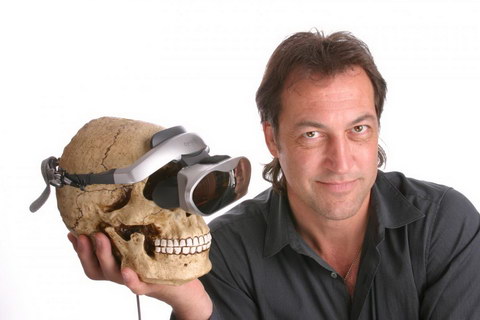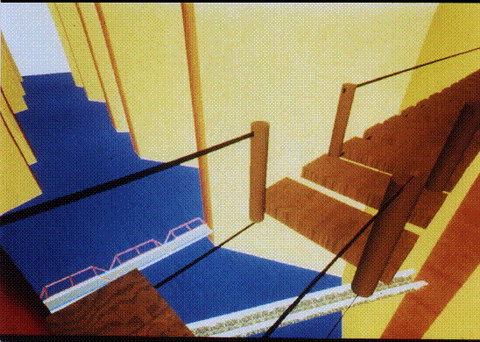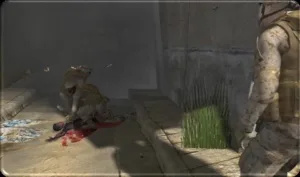On April 28th, Dr. Albert “Skip” Rizzo gave a webinar titled “Clinical Virtual Reality and the Psychology of Immersive Storytelling” as part of the SMPTE Professional Development Academy education series. Dr. Rizzo is a clinical psychologist/neuropsychologist and Director of Medical Virtual Reality at the University of Southern California Institute for Creative Technologies (ICT). He is also a Research Professor with the USC Dept. of Psychiatry and at the USC Davis School of Gerontology. In addition to this SMPTE webinar, he took part in the Digital Hollywood event from May 3 – 6. He was on the panel that discussed “Unlocking Intelligence: Education within Technology and Virtual Worlds – VR-AR-Immersive.” This panel was part of the immersive entertainment track of Digital Hollywood’s spring program.
 Skip Rizzo, PhD
Skip Rizzo, PhD
The USC Institute for Creative Technologies has been doing virtual reality (VR) for a long time, predating the current craze for VR based on head mounted displays (HMD). Much of the work has been financed by the US military and all of it, until recently, has been targeted at practical applications, not entertainment. With a PhD in psychology, Dr. Rizzo, not surprisingly, mostly discussed applications related to people’s psychological problems.
For example, he has done research into the use of VR in the treatment of phobias such as the fear of heights, flying, driving, spiders/snakes, public speaking and claustrophobia. Some of the early systems and graphics used in these treatments were very simple compared to modern graphics, yet research studies showed that exposure via VR to these stimuli could ease a person’s fears in the real world. Even with primitive equipment and graphics, these studies showed significant improvement in people with these phobias when VR was used.
Dr. Rizzo emphasized that the use of VR in these treatments was not a replacement for a trained therapist. Rather, VR was a tool a therapist could use that was proven to work on some people. He said that not every tool available to a therapist worked on every patient. Therefore, in these types of problems, the more tools available to the therapist, the more likely it would be that one of them would work for a given patient.
 VR image used in 1994 by Rothbaum, et. al. in a study on the treatment of the fear of heights.
VR image used in 1994 by Rothbaum, et. al. in a study on the treatment of the fear of heights.
Much of the work on VR done for the military is related to the treatment and prevention of Post-Traumatic Stress Disorder (PTSD). Given the wars in Iraq, Afghanistan and now Syria, this is a problem, especially for the foot soldiers in the Army and Marine Corps.
The USC ICT has been working on a program with the army called STRIVE: STress Resilience In Virtual Environments. The goal of STRIVE is the reduction and prevention of PTSD. As part of this program, Dr. Rizzo’s group has created six short VR stories of incidents that could induce PTSD. Each of these stories has been created in both Soldier and Marine format. The currently existing episodes are:
Ep 1: Humvee – “On the Road Again”
Ep 2: Humvee – “First Hit”
Ep 3: Dismounted Patrol – “Culture Shock”
Ep 4: Dismounted Patrol – “The Innocent”
Ep 5: Dismounted Patrol – “Loss of a Leader”
Ep 6: FOB – “Life After Death”
Dr. Rizzo used “The Innocent” as an example episode. Here, a squad is on patrol in a town in the desert. One of the men in the patrol, through an interpreter that is embedded in the patrol, tells a boy playing soccer to get out of the way. The boy goes down an alley and is blown up by a booby trap intended for the soldiers. Clearly this is a situation that can induce stress and possibly lead to PTSD, especially for the poor soldier who told the boy to get out of the way.
One story board image from “The Innocent”
These six episodes are all short, about 10 minutes each, and after the soldier goes through the VR experience, the episode is discussed with trained personnel. Research has shown that soldiers that go through this type of emotional training have a lower incidence of PTSD than soldiers that do not. Dr. Rizzo believes that all soldiers should be as emotionally prepared for combat as they currently are physically prepared and VR is one of tools available for this preparation. He also presented data showing that soldiers returning from combat with PTSD improved after being treated with VR by therapists. VR isn’t the only treatment for PTSD but it can be one more tool in the therapist’s toolbox.
Entertainment VR will (hopefully) be less gruesome than this PTSD training. One thing Dr. Rizzo learned from the STRIVE program was that good VR stories are expensive. The reason there are only six episodes for STRIVE so far is that the funds allocated by the army ran out after the sixth episode.
One question Dr. Rizzo couldn’t answer was “How long should VR episodes last?” He said the 10 minute STRIVE episodes work but he was sure two hour episodes would not work, leaving a large, uncertain gap in-between. He said about the current state of VR was that it wasn’t at the Ferrari stage yet but was still at the Model T stage. He and the industry still have a lot to learn about how to tell a story with VR.
Dr. Rizzo’s complete 1 hour webinar has been archived on-line and is available free for SMPTE members. –Matthew Brennesholtz
(this kind of development is also being pursued in the UK – see VR Used to Treat Mental Disorders)

